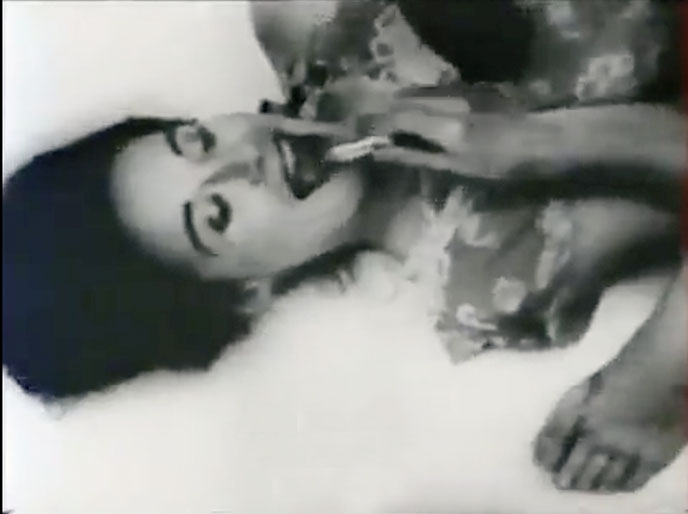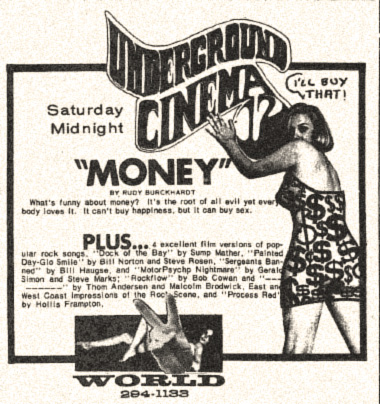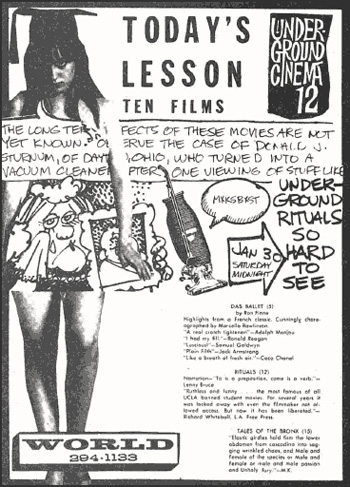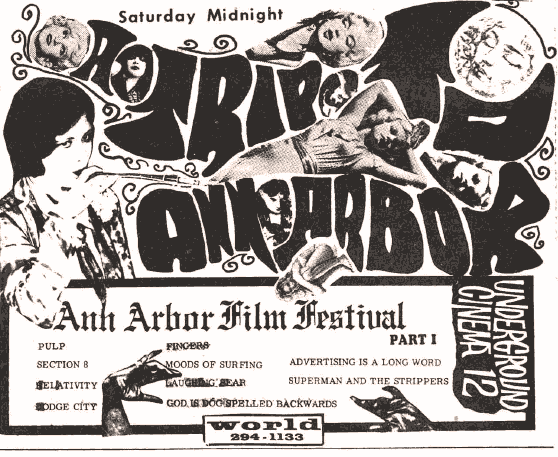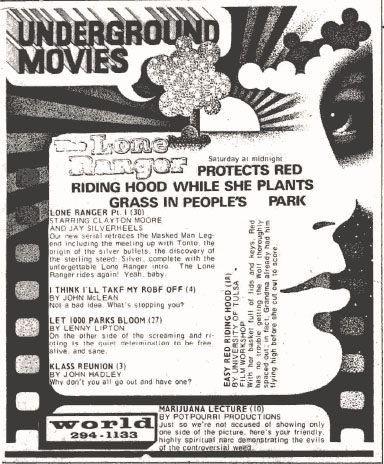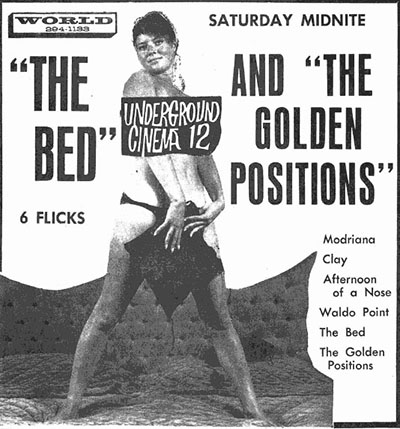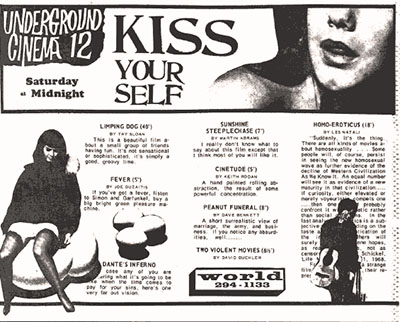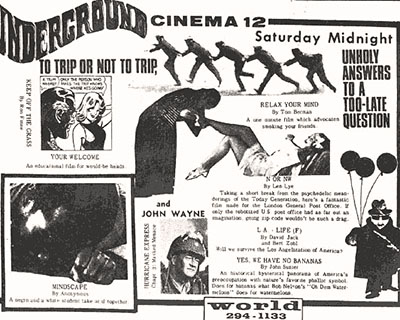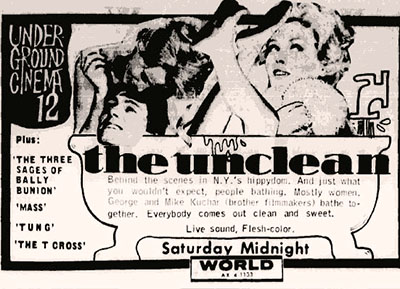|
||||||||||||||
From 1967 to sometime in 1976, the World Theater at Lane and High was host to Underground Cinema 12, a late night celebration of outsider film. Shown Fridays or Saturdays at midnight, UGC12 brought 90-120 minutes of avant-garde, experimental, counterculture, and camp films from New York, San Francisco, Los Angeles, and London to audiences in Columbus. UGC12 was created by Mike Getz, a nephew of Art Theater Guild owner Louis Sher. Bexley-native Sher was the owner of campus' World Theater. and about 30 other arthouse theaters in Ohio, Southern California, Arizona, and college towns in Colorado, Kentucky, Illinois, and Missouri. Bexley's Twin Theater (first 2-screen theater in the world) was one. So was Yellow Springs' legendary Little Art Theater. Getz was involved in the underground film scene in Los Angeles and interested in expanding access to these works which mostly just played at art galleries and private screenings. UGC12 began at the Sher-owned Cinema Theater in Hollywood in 1963. It was a hit there and Getz persuded his uncle to slowly roll it out to other theaters in The Art Theater Guild chain where it seemed likely to be successful. Cinemas near college campuses were an obvious choice.
Despite underground cinema's commitment to new visions and fresh voices, almost all of those voices were young, art school-educated, middle-class born, white men from New York City. Black, Latino, Indigenous, or Asian visions were absent. Creators not from the coasts were left out. Women's voices particularly were unheard. Female perspectives were not even imagined. Female characters fell into shopworn stereotypes and were mostly just sex objects or decoration. Homosexual and transexuals, however, were well-represented. Who went? A lot of grad students and faculty. Intellectually curious upper classmen. Occasional artsy-types and freethinkers from Clintonville, Worthington, or UA who were willing to brave campus on a Saturday night. "Dozens of intellectual sado-masochists, weirdos, and eccentric humorists" were how one Lantern writer described the UGC12 audience. Another described it as "students with a few intense middle-aged men." Initially, UGC 12 was strongly committed to the artistic and experimental films and, while these had their audience, they didn't fill seats like the more popular and accessible material. The Betty Boop cartoons, Tarzan serials, and Laurel and Hardy shorts were widely enjoyed and began taking up a bigger chuck of the program. Musical films with The Beatles and Stones, The Grateful Dead, Bob Dylan, and even some live performances with psychedelic light shows also started crowding out the subversive and artsy fare. Foreshadowing the future direction of the theater, sexually-themed material with lots of (female) nudity was also wildly popular and guaranteed sold-out shows. Most of the advertising for UCG12 featured repurposed skin magazine models or bikini girls and naughty wordplay to support the audience's belief they would always find something sexy at a show. Three things ultimately did in UGC12. First, the underground became mainstream. Counterculture became the culture. Grannies wore dresses with hippie flowers. Schoolgirls had peace sign necklaces and long-haired boyfriends. Dirty old men dabbled in the Sexual Revolution. Film followed suit. The once transgressive and revolutionary was on the screen at suburban shopping mall cinemas. And nudity on film was suddenly ubiquitous. Second, most of the Art Theater Guild houses transitioned to porn theaters. The World made the transition in the early part of 1977. Porn was lucrative but porn theaters carried a stigma. Art house crowds, grad students, and college couples on a date didn't generally go to porn theaters. Third, The Rocky Horror Picture Show--the ultimate midnight movie--came along in 1975. It found its audience in 1976 and expanded to midnight shows at hundreds of theaters by 1979. Rocky Horror blew everything else out of the water.
|
||||||||||||||

|



